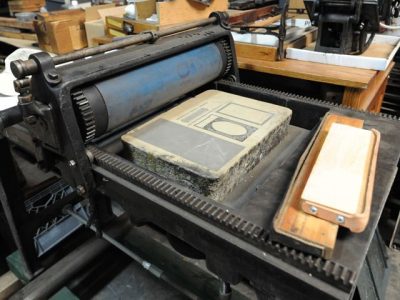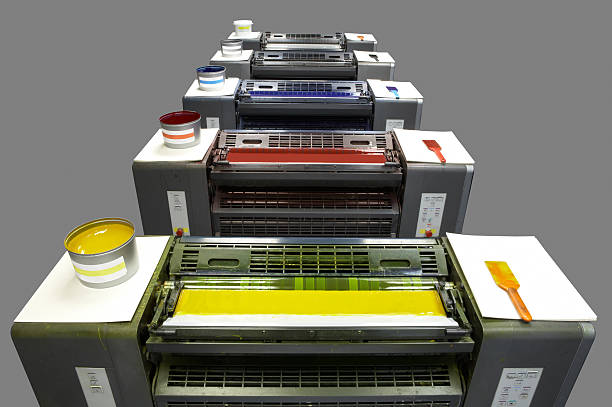A Comprehensive Guide to Recognizing Litho Printing Methods
The world of litho printing, a method stemming from the late 18th century, is an interesting mix of background, scientific research, advancement and art. Keep with us as we journey into the fascinating world of litho printing.
The Historical Advancement of Litho Printing
The historic trajectory of litho printing, a pivotal development in the world of interaction, is a fascinating story of human resourcefulness. The procedure advanced with the development of the rotating press, which greatly boosted performance. Each phase of litho printing's advancement showcases mankind's relentless search of performance and quality in visual interaction.
Decoding the Scientific Research Behind Litho Printing Inks
Moving on in the exploration of litho printing strategies, the emphasis now shifts to the scientific research behind litho printing inks. The make-up of these inks, their drying process, and shade mixing methods form the backbone of this complicated art kind. Understanding these elements is important to understanding the craft and attaining the desired print outcomes.
Structure of Litho Inks
In lithographic printing, the basic function of litho inks can not be overemphasized. Pigments, the color-providing elements, are finely ground particles suspended in the car, a liquid that carries the pigment onto the printing surface. Each part plays a critical part in the last print's high quality, making the accurate formula of litho inks an intricate science.
Ink Drying Process
From the composition of litho inks, attention turns to the fascinating process of ink drying. 2 key methods are utilized in litho printing: oxidative drying and absorption. Absorption, on the various other hand, entails the ink permeating into the paper fibers, which is a quicker process yet can lead to much less vibrant shades.
Color Combining Methods
While the drying procedure plays an essential function in litho printing, the science of color mixing techniques holds equal significance. This is an intricate procedure that entails the careful blending of primaries: cyan, magenta, and yellow, in varying percentages to accomplish a large array of tones. The addition of black ink, known as 'key', assists in controling the intensity and depth of the colors. The scientific research behind litho printing inks likewise considers the transparency of the ink, which influences just how shades overlay and mix. To attain an efficient shade mix, print specialists should additionally recognize the complexities of ink behavior, shade theory, and the physical residential or commercial properties of the substratum on which the ink is used.
The Art and Design Aspects in Litho Printing
Litho printing breathes life right into art and layout via its unique components. Litho printing fits a selection of colors, making it possible for artists to produce vivid and vibrant prints. This combination of precision and adaptability makes litho printing a preferred selection for several artists and developers.
Modern Applications of Litho Printing Techniques
Litho printing techniques have located comprehensive usage in the modern commercial field. Its influence and significance remain to grow with the arrival of brand-new advancements and technologies in the field. This section will discover these modern helpful resources applications and the transformative role they play in the printing market.
Industrial Litho Printing Utilizes
In today's electronic age, one might question the significance of typical printing methods. Yet, litho printing remains an essential component of the business field. High-volume printing jobs, such as the manufacturing of books, papers, and product packaging, rely upon litho printing for its ability to provide premium picture high quality and price efficiency. The process, which involves moving an inked picture from a plate onto a rubber covering and after that to the printing surface, provides unparalleled uniformity. This makes it excellent for tasks requiring a big print run. Litho printing also offers a wide shade range, premium to that of digital printing. This makes it the go-to choice for tasks that demand dynamic, top notch shade recreation.
Technologies in Litho Printing
Pushing the borders of conventional methods, contemporary developments have fueled a host of advancements in litho printing. These breakthroughs have not only boosted the quality and efficiency of litho prints however also increased its application range. One famous advancement is electronic litho printing, which combines the merits of digital innovation with litho's top notch result. This hybrid design provides faster arrangement times, minimized waste, and allows on-demand printing. One more significant improvement is the intro of environmentally pleasant inks. These inks, made from vegetable or soy-based options, have significantly decreased the industry's ecological impact. litho printing. In addition, the advancement of sophisticated plate technology has streamlined the printing process, leading to sharper photos and boosted color integrity. These technologies underscore the enduring significance of litho printing in the modern-day globe.
Checking out the Refine of Litho Printing: Detailed

Obstacles and Solutions in Contemporary Litho Printing

In spite of the accuracy and custom that litho printing proudly promotes, it is not without its collection of modern obstacles. useful content The most common issues consist of the high preliminary configuration price, trouble in printing variable data, and environmental worries as a result of chemical usage. Options are arising as innovation advances. Digital litho printing enables for cost-effective short runs and easy customization, addressing the issue of variable data. Environmentally-friendly inks and safer plate-making procedures mitigate environmental concerns. Additionally, developments in automation have actually lowered labor costs, additionally democratizing the lithography procedure. Therefore, while there are obstacles, the litho printing market is proactively adapting to satisfy them head-on, guaranteeing its significance in the future.
Verdict
In verdict, litho printing, with its rich history and clinical details, holds a significant area in the print market. The future of litho printing hinges on its ability to adjust to these transforming demands, attesting its enduring value in a progressing market.
